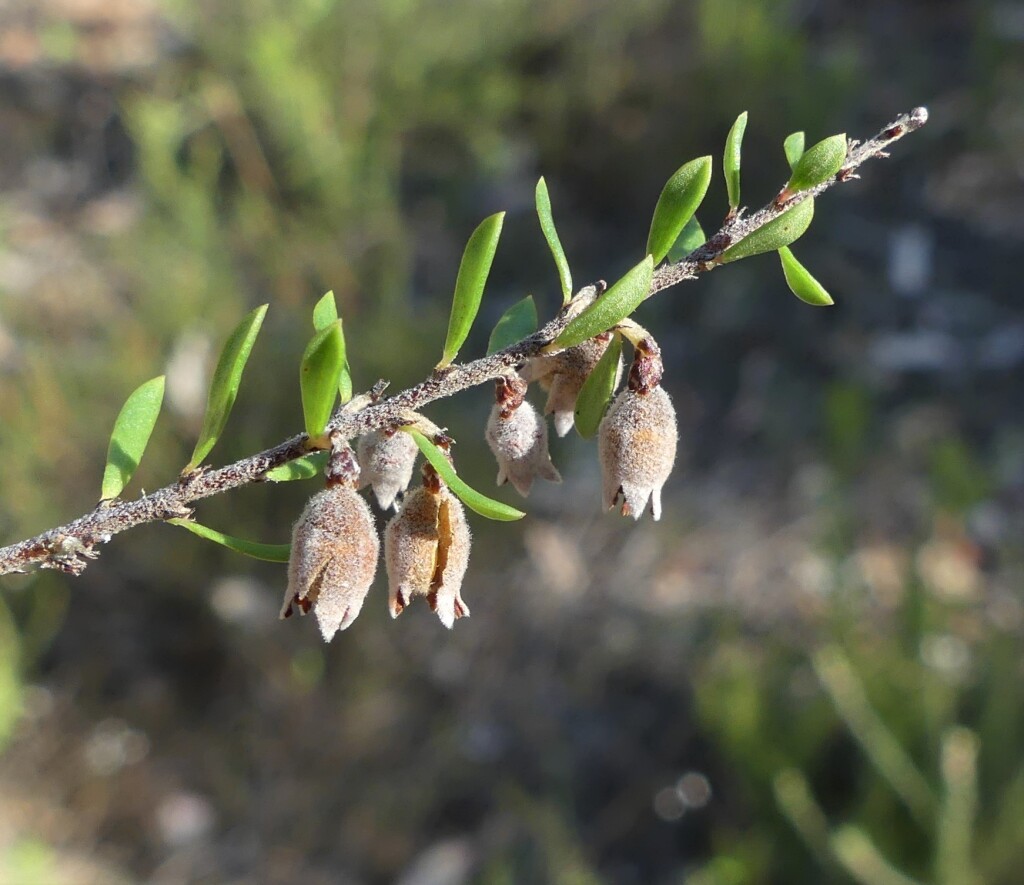Cryptandra amara
Sm. Bitter CryptandraNearly prostrate, wiry subshrub to an erect, often divaricately branched, sometimes spinescent shrub to c. 1 m high; branchlets covered with fine stellate hairs. Leaves shortly petiolate, ovate to obovate or oblong, 2–5 mm long, 1–2 mm wide, glabrous or with a few appressed simple hairs on or adjacent to the midrib on the lower surface, margins usually recurved, apex sometimes recurved; stipules to 1 mm long. Flowers very shortly pedicellate, crowded toward branch-tips, rarely solitary; bracts brown, broad-elliptic, to 1.5 mm long, blunt or truncate, glabrous to minutely ciliate; perianth c. tubular, or lobes spreading for a short period, white, sometimes reddening with age; sepals slightly shorter than to equal to hypanthium; petals c. 0.5 mm long; style entire or shortly 3-lobed, subequal to or shortly exceeding hypanthium, glabrous. Fruit 3–4 mm long, sub-equal to the enlarged hypanthium. Flowers (Jun.–)Aug.–Oct.(–Dec.).
LoM, MuM, Wim, VVP, VRiv, MuF, GipP, Gold, CVU, NIS, EGL, EGU, HSF, HNF, MonT, VAlp. Scattered on shallow, often rocky soils of central, northern and eastern Victoria, commonest in dryish woodland along foothills of the Great Dividing Range, extending to alpine areas near e.g. Mt Wellington and Nunniong Pleateau.
There are no discrete characters to justify the retention of var. longiflora F.Muell. ex Maiden & Betche. South Australian plants referred to (but not within the original circumscription of) that variety however warrant recognition as a distinct entity.
Walsh, N.G.; Udovicic, F. (1999). Cryptandra. In: Walsh, N.G.; Entwisle, T.J., Flora of Victoria Vol. 4, Cornaceae to Asteraceae, pp. 110–114. Inkata Press, Melbourne.
 Spinning
Spinning

